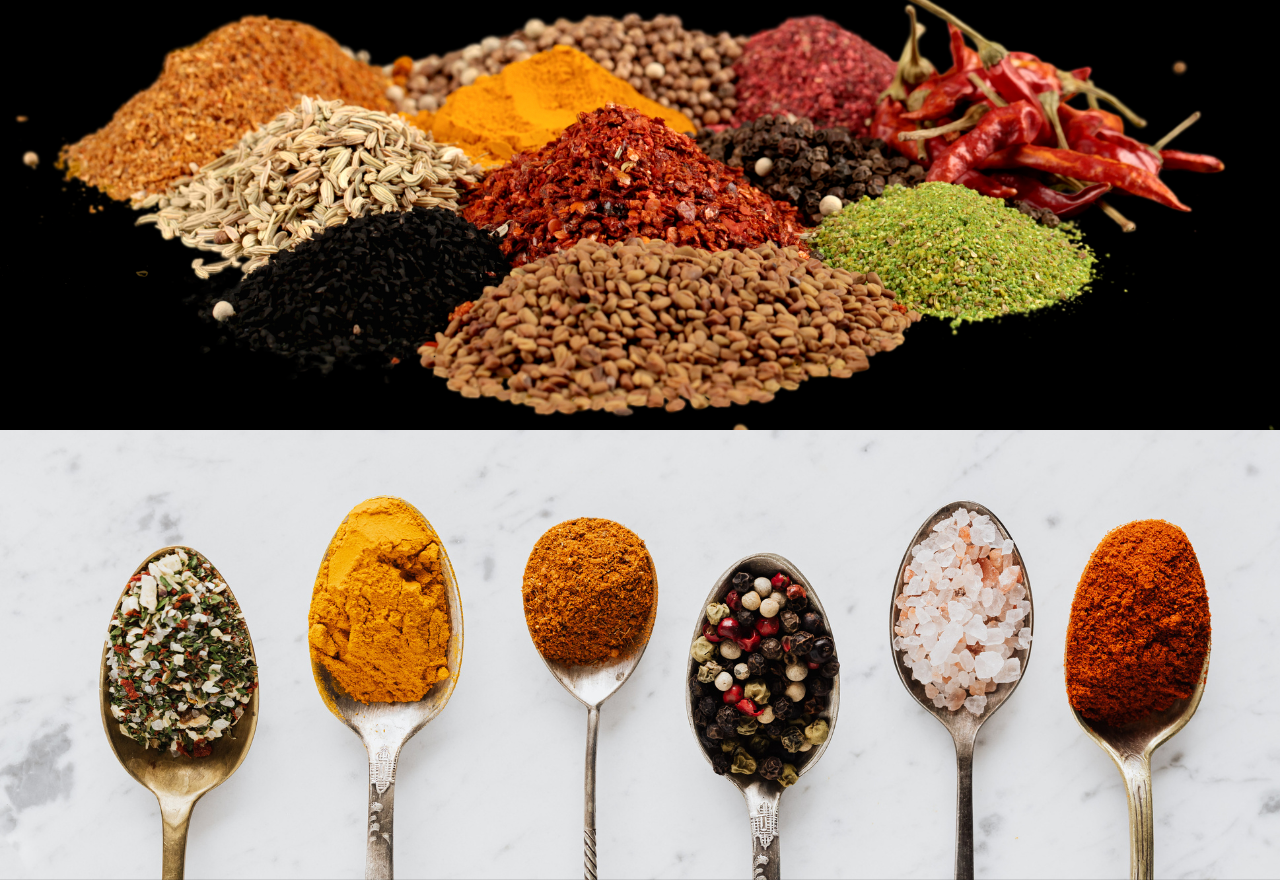Dried vs. Fresh Spices: Which Should You Use?
22 October 2025, 4:20 AM

Spices are arguably the most integral components of any dish. They enhance the taste of a standard meal’s taste profile, and they’re highly capable of bringing out a new dimension to any dish they end up being paired with.
From turmeric to oregano, there is a wide variety of spices that can be called upon to lift a dish’s flavour profile.
Typically, these spices can be categorised into one of two broad categories: dried spices and fresh spices. While the spice’s makeup remains largely the same, the type of variant used brings out an entirely new flavour profile during the cooking process.
Knowing the nuances of each spice variant is critical to ensure that you use the right type when you’re whipping up a specific dish. Just like how certain spices pair well with certain meat or soup bases, the spice’s dryness also plays a significant role in influencing the flavour profile and bringing out the most palatable one.
So, this begs the question: how does one know when to use dried spices or fresh spices in the kitchen? If you’re in that dilemma, then worry no longer: this article will delve into the key differences between the two types and ways on how you can prepare your next dish with each.
Let’s jump right into it.
The Significance of Spices
Many dishes around the world are made with a combination of different spices, and for good reason.
For one, spices carry the heritage and story of the region in which they originally grew and spread. The exclusivity of certain spices (due to how spices grow only in certain temperatures or altitudes) is the reason why exotic spices were prized commodities in the past.
Spices continue to be a common item in supermarkets and dishes across many nations, with brands like Austral Herbs offering a wide selection of dried spices for the everyday consumer. Nowadays, it’s not uncommon to find spices like turmeric and cumin in European grocery stores, or paprika in Canada, thanks to global trade routes that enable a flourishing trading scene.
Looking back to the kitchen, spices shape how we prepare dishes. The right spices allow home cooks to prepare meals that not only taste better but also achieve a new level of creativity. For instance, a sprinkle of cumin can instantly make a stew more aromatic, while a touch of pepper can add a kick to a meat dish.
Spices, in essence, introduce a new flavour profile to dishes. They transform ordinary meals into something multi-layered and complex. They can also be mixed and matched to create a slew of new dishes and give rise to more flavour profiles than ever before. In essence, they add vibrancy to the kitchen.
Fresh vs Dried Spices: What’s the Difference?
Spices can come from a variety of sources, with herbs and roots being some common ones. Ginger, basil, cilantro, mint, garlic, and chilli peppers are some popular examples of spices that are frequently found in many home kitchens.
Taken in their natural form and used directly for cooking are fresh spices. This type of spice retains its natural moisture and essential oils. They typically make the dish more flavourful, aromatic, and fresh.
On the other hand, dried spices are dehydrated variants of fresh spices. When weighed equally, dried variants pack more flavour due to having higher concentration levels. They also tend to have a longer shelf life than fresher versions, especially when kept at room temperature.
Cooking Use
In the kitchen, fresh and dried spices have different uses when flavouring a dish.
Fresh spices, as previously mentioned, provide a fresh edge to your everyday meal. This is because of the spice’s naturally high moisture content and farm-to-table nature. The inherent brightness of this herb type makes it a good addition as a garnish for salads and an ingredient for stir-fry. It’s common for fresh spices to be added towards the latter end of meal preparation.
On the other hand, dried spices are introduced early during the cooking process. They’re often best when cooked slowly over time, as gradual heat helps them release their flavour concentration most optimally. Dried spices are considered a great flavour enhancer in crock pots or appliances that enable the dried herb to be slowly simmered. They’re plentiful in stews, curries, and roasts.
Dried herbs and fresh herbs can’t exactly be used interchangeably, as their different profile demands different handling and timing in the cooking process. Understanding the differences helps ensure that you’re preparing the dish and showcasing its best qualities in the most optimal way.
Flavour Profile
The flavour profile of fresh and dried herbs is quite different, even if they come from the same natural source.
Fresh herbs tend to have a more aromatic and vibrant taste. They offer a clean and green finish to a dish. Salads are full of excellent spices that deliver this fresh note. In other dishes like pasta with fresh basil, the spice tends to give a lift that a dried version can’t exactly replicate.
On the other hand, dried herbs offer a more intense flavour profile. Dried herbs are roughly three times stronger in flavour than fresh herbs. The spice’s natural moisture is gone during the dehydration process, and what remains are earthy and robust notes that slowly seep into the food.
In essence, fresh spices add liveliness to a dish, whereas dried spices add warmth and richness.
Cost and Convenience
When it comes to cost, dried herbs are seen as cheaper and easier to store. This is because they can be preserved for a long time and don’t require extensive refrigeration to maintain their freshness. This makes it easy to stock up on dried herbs in bulk without having to constantly check their expiry date.
Fresh herbs not only cost more, but they also wilt much more quickly. Their availability may also be limited depending on an herb’s inherent seasonality.
However, they tend to look great on most dishes and add an irreplaceable freshness to a standard dish, so they’re not outright inferior to dried herbs either. Plus, they retain more of the nutrition than dried herbs. And you can grow spices at home too, making them even more accessible than dried herbs in some scenarios.
Which is Best: Dried or Fresh Herbs?
There’s no single winner when it comes to the battle between dried and fresh herbs.
Fresh herbs are best if you want a fresh, vibrant, and aromatic ingredient for your next meal. They pair well with salads and pastas and help provide a nice brightness to them. They also help round out a meal’s presentation and give it a nutritional and healthy kick.
On the other hand, dried herbs add intensity to dishes. They are best used when slowly cooked, as they can help reveal deep, earthy notes—giving a dish a richer dimension of flavour. They’re also more affordable and easier to store in the pantry.
Both are good types of spices to have in the kitchen—and it’s a good idea to be in close reach with both for your next meal preparation session. Regardless, we hope that we’ve cleared the difference between the two types of spices. All the best in your cooking journey!
ACCOMMODATION


